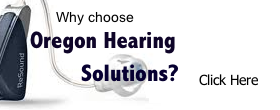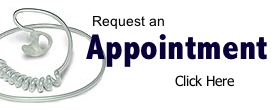Protect Your Ears
While illness, injury, genetics, and overuse of certain drugs can all lead to hearing loss, the primary reason most aging Americans go deaf is their past exposure to noise. With every noise that is loud or long enough, some of the approximately 16,000 miniscule hairs inside each ear that allow sound waves to be heard are permanently damaged, causing a gradual hearing loss that becomes noticeable in middle age and beyond. Some sound advice:
Plug ’em: Wearing ear protection is the obvious way to protect these sensitive hair cells, but you don’t have to look like an airport baggage handler while doing it. Small foam plugs that discreetly fit in your ear may actually be better than the bulky, padded earmuff types, says David Nielsen, M.D., of the American Academy of Otolaryngology–Head and Neck Surgery. These plugs reduce noise by about twenty decibels compared with the fifteen decibel protection you get from more expensive padded earmuffs. “Plus, the plugs are cooler,” he points out.
Work out in silence: Regular exercise keeps hearing sharp by improving or maintaining good blood flow to the inner ear. But during exercise, when more blood is feeding muscles, less may get to nerves that control hearing, making them more vulnerable to noise-caused damage. Some studies indicate that loud music or noise heard during exercise may be more damaging than noise heard at the same volumes when you’re sedentary. Researchers are not unanimous about this, “but unless you need to listen to loud music while you exercise, you probably shouldn’t,” says Nielsen.
Don’t be a blowhard: Strenuous nose blowing can cause temporary or permanent hearing loss by rupturing the delicate structures inside the eardrum. To relieve nasal congestion, advises Nielsen, gently blow one nostril at a time.
Get screened: If you have diabetes, you’re more likely to suffer earlier and faster hearing loss, probably because of impeded blood flow to nerves that control hearing. “If you have diabetes in particular, you really should consider getting a yearly hearing test, just as you get annual tests for vision, kidney function, and other possible diabetes complications,” says Nancy Vaughan, Ph.D., a researcher at the National Center for Rehabilitative Auditory Research in Portland, Oregon, who has investigated the diabetes-early-hearing-loss link. Those with high blood pressure or high cholesterol could also benefit from regular hearing screenings, she adds.
Watch your aspirin: Aspirin is among the two hundred or so medications that can cause hearing loss by damaging hearing hair cells and nerves that carry sounds to the brain. This is not to say you should ditch your daily aspirin therapy. But it does mean you should be diligent about following the typical recommended dosages for heart health and pain–and not take much higher doses. You’ll know you’re taking too much aspirin if your ears “ring,” but the ringing stops when you stop taking aspirin.
How should I care for and maintain my hearing aids?
More than seventy-five percent of all hearing aid repairs are due to moisture and earwax accumulating in the hearing aid. The vast majority of these repairs are one hundred percent preventable. It is extremely important to clean the entire hearing aid every time it is removed from your ear by wiping and brushing it. To better protect your investment, use a DRY-AID kit every night! Electronic dry-aid kits are the best. They include a germicidal light that kills most bacteria and other germs. They also have desiccants to absorb moisture and fans to circulate air around the internal components of the hearing aid. Get in the habit of cleaning the hearing aid after each use and keeping the hearing aid in the dry-aid kit at night. Hearing aids are electronic, which means moisture is their enemy! Preventive maintenance is the key to a trouble-free, long life from a hearing aid. A well-maintained hearing aid can easily last five to seven years, maybe longer.
Hearing Aid Purchasing Tips
Re-published with permission from Associated Audiologists, Inc.
- Find the right provider and begin with a diagnostic hearing evaluation, which is the “blueprint” for your individualized recommendations. Ninety percent of your success with hearing aids is related to the professional you work with. At Oregon Hearing Solutions, Dr. Johnson is a university-trained, doctoral-level audiologist and is a Fellow of the American Academy of Audiology and the Academy of Dispensing Audiologists. He has been certified by the American Speech-Language-Hearing Association and upholds a professional code of ethics.
- Work with a provider who can give you options specific to you and your lifestyle. Your audiologist should be able to choose from a variety of hearing aids and a number of respected manufacturers. Franchise or “chain” stores often do not provide this flexibility for consumers.
- There are significant differences across hearing aid technology. A hearing aid uses a tiny computer chip to process sound. More sophisticated computer chips have better processing, which result in improved satisfaction. Costs can range from $750 to $3500 per hearing aid, depending upon the level of technology. Advanced technology with enhanced features will cost more than simpler technology and perform better in more demanding listening environments.
- Make sure your audiologist uses specialized diagnostic and verification equipment, including real-ear probe microphone and speech mapping measures. These sophisticated tests independently verify how the hearing aid functions while in your ear.
- Regular follow-ups are necessary, so expect to pre-schedule your appointments. Routine maintenance and regular monitoring of hearing and hearing aids are critical to success.
- A hearing aid purchase should include an assessment period during which the hearing aid fee is either fully refundable or has a minimum non-refundable amount, if the device isn’t satisfactory. Be sure to ask about the other options available if a particular device doesn’t work out during the assessment period.
- Be informed. Advertisements that offer big discounts or special “discount plans” are usually based upon inflated manufacturer’s suggested retail price (MSRP). “Free trials” are often non-custom devices fit without verification. Also, be wary of advertisements promising discounts for trying new hearing aids under “study or clinical trial.” These marketing techniques can be misleading, because hearing aid manufacturers conduct these studies prior to new product release.
- Hearing aid manufacturers discourage the sale and purchase of hearing aids online, especially those that are not directly supported by local, licensed professionals trained to fit sophisticated hearing aid technology. Hearing aids purchased online may not be under warranty, may be difficult to get refunded, and in some cases, the seller may take advantage of the online consumer.



